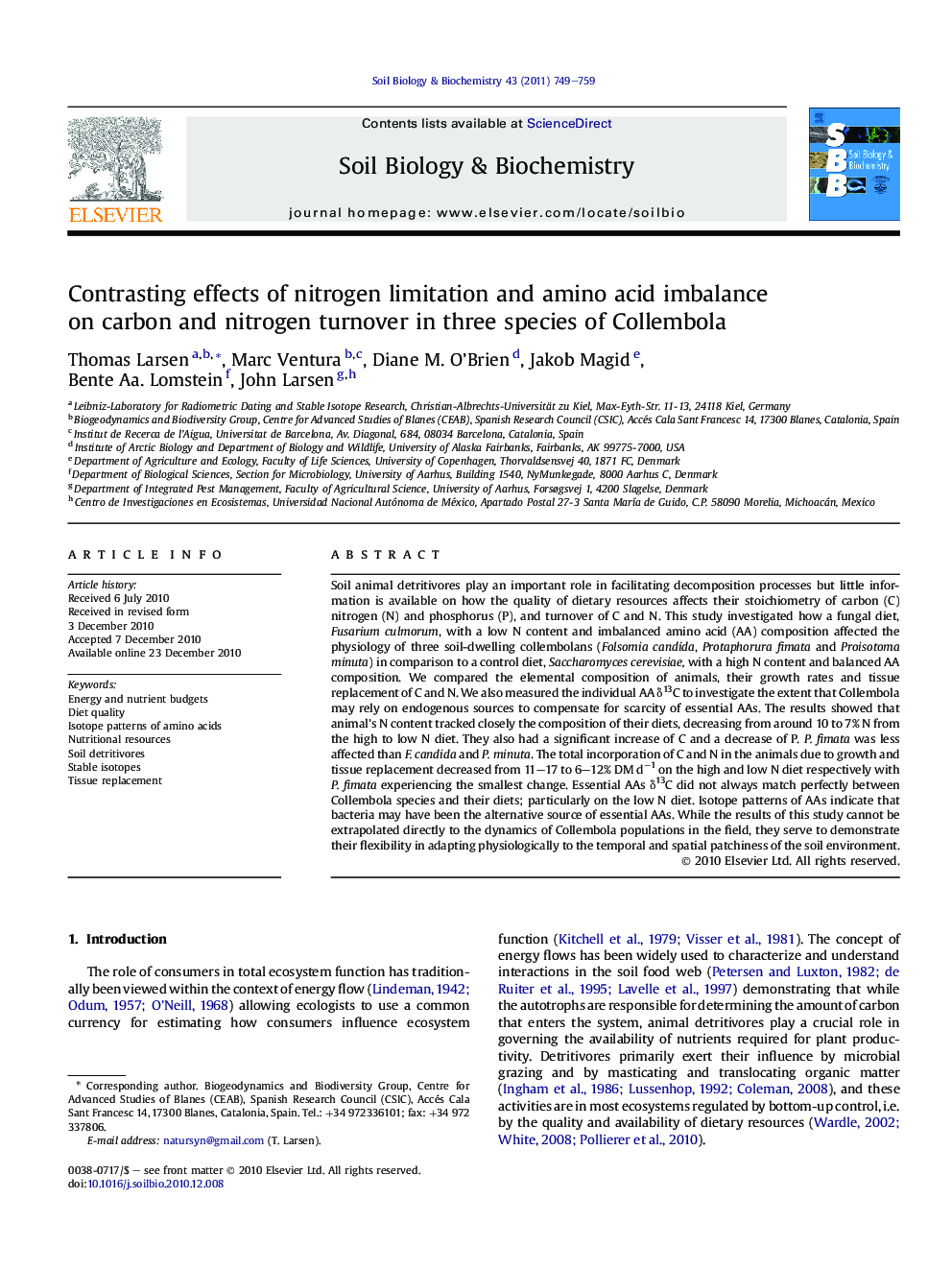| Article ID | Journal | Published Year | Pages | File Type |
|---|---|---|---|---|
| 2025453 | Soil Biology and Biochemistry | 2011 | 11 Pages |
Soil animal detritivores play an important role in facilitating decomposition processes but little information is available on how the quality of dietary resources affects their stoichiometry of carbon (C) nitrogen (N) and phosphorus (P), and turnover of C and N. This study investigated how a fungal diet, Fusarium culmorum, with a low N content and imbalanced amino acid (AA) composition affected the physiology of three soil-dwelling collembolans (Folsomia candida, Protaphorura fimata and Proisotoma minuta) in comparison to a control diet, Saccharomyces cerevisiae, with a high N content and balanced AA composition. We compared the elemental composition of animals, their growth rates and tissue replacement of C and N. We also measured the individual AA δ13C to investigate the extent that Collembola may rely on endogenous sources to compensate for scarcity of essential AAs. The results showed that animal's N content tracked closely the composition of their diets, decreasing from around 10 to 7% N from the high to low N diet. They also had a significant increase of C and a decrease of P. P. fimata was less affected than F. candida and P. minuta. The total incorporation of C and N in the animals due to growth and tissue replacement decreased from 11–17 to 6–12% DM d−1 on the high and low N diet respectively with P. fimata experiencing the smallest change. Essential AAs δ13C did not always match perfectly between Collembola species and their diets; particularly on the low N diet. Isotope patterns of AAs indicate that bacteria may have been the alternative source of essential AAs. While the results of this study cannot be extrapolated directly to the dynamics of Collembola populations in the field, they serve to demonstrate their flexibility in adapting physiologically to the temporal and spatial patchiness of the soil environment.
Research highlights► Collembola are in regards to nitrogen among the least homeostatic animals reported in the literature. ► The species with the widest dietary breadth was the least affected by a low nitrogen diet in terms of growth and tissue turnover. ► Essential amino acids d13C did not match perfectly between Collembola species and their fungal diets.
